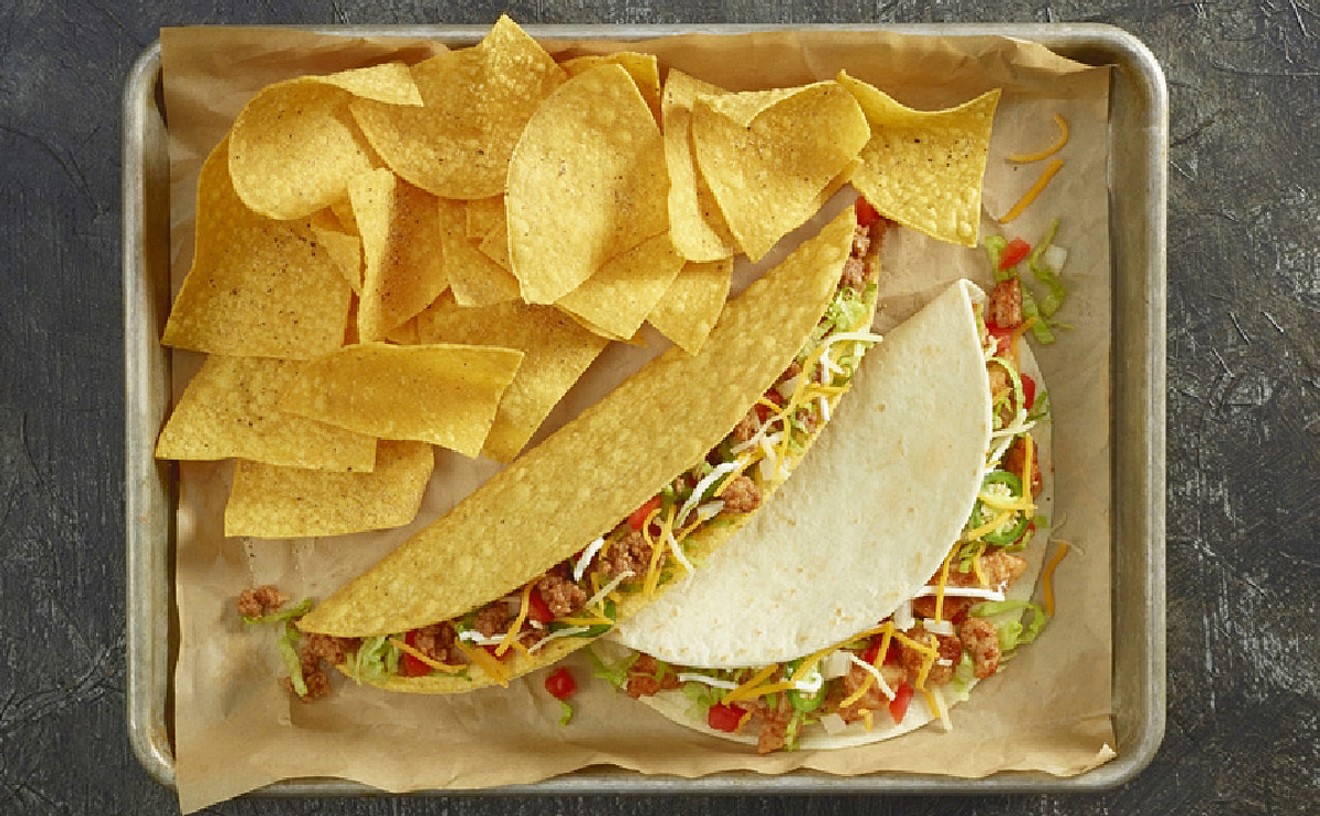White tuna is the most recent specialty item to hit sushi bars. Shibui in Miami began carrying it less than a year ago. Sushi Hana in Miami Beach added it to the roster only two years ago. You won't find it on the printed menus, however. You have to ask for it, and even then, you might not get it. Not all Japanese restaurants carry it, and the staff in those that do are awfully confused about it.
For instance I requested white tuna at Asian Grille & Sushi Bar in West Palm Beach the other evening. The waiter nodded -- yes, they served it. But what species of fish is it exactly? I wanted to know. "Um, I guess it's tuna that's not red. It's white," I was told. Trust me when I say that was the start of a very long dinner.
This is not the first time I've been met with a bewildered shrug when I ask that question, which I have been doing often for the past few months. It's albino tuna, one server informed me. It's actually fish that's sick, a worker in another sushi restaurant offered.
Obviously white tuna has some of the same qualities as urban legends. Since it's not on the menus, a friend must make the introductions: Virgin palate, meet white tuna. After you've sampled it, you have little choice but to swallow whatever credulous story the friend tells you, which accounts for why people think there is an abundance of albino fish making their way to restaurants across the nation. I was shown the Great White Way by my father-in-law, who didn't know what white tuna really was. All he did know was that "it tasted like buttah," and that was good enough for him.
Part of the bafflement stems from the fact that most people believe all varieties of tuna are red-fleshed. Albacore tuna is the only one light enough to qualify as white, but in the United States, we usually associate albacore with Chicken of the Sea; Kelly McClure, author of The Fish Book, writes that "it is favored by the canning industry." The Food Lovers' Companion concurs: "The high-fat albacore weighs in the 10- to 60-pound range, has the lightest flesh (white with a hint of pink) and is the only tuna that can be called “white.'" What we consider sushi-quality tuna more often comes from bluefin, yellowfin, or big eye tuna, whose flesh colors range from pink to dark red.
So mystery solved, yes? White tuna simply is albacore, previously unfamiliar to Americans in any form but cat food. And if you dine on Miami Beach at Sushi Rock Café or Sushi Siam, you'll soon be happily munching on albacore.
Except that Shizuo Tsuji, author of Japanese Cooking, notes that toro, prime-cut tuna, also is called "white," presumably because of the delicious fat that stipples it. And then, just to add to the melee, there's more than one "white tuna" on the market, the folks at Sushi Chef in Coral Gables tell me. There's albacore, there's toro, and then there's escolar, a white-fleshed member of the mackerel family, of which tuna is a distant cousin.
Albacore and escolar, as it turns out, are almost identical. They have the same silky texture, share the prized pale coloring, and feature a similar mild flavor. The only difference is in the longer grain that you see in albacore, which tend to be bigger fish, and the small sprinkling of veins you might find in escolar.
So how do you know which white tuna you're eating? You don't, unless you ask, admits Akiko Matsumoto, manager of Shibui. Her restaurant happens to serve escolar, about which the customers had to educate sushi chef Bablo Nakamatsu. "At one time we served albacore," he says, "but people said no, that's not the one. Escolar is the one people ask for, because it's whiter."
This is not a classic bait and switch, substituting escolar for albacore the way Su-Shin palmed off sailfish as tuna several months ago. The two fish really do seem to be interchangeable, and what the restaurants serve depends on customer preferences. Moreover one is not more expensive than the other, though there seems to be some question as to whether albacore comes from the purveyors frozen. Nakamatsu says it does, but Steve, the sushi chef at Sushi Hana (who won't give his last name), claims he only buys fresh albacore. Escolar, on the other hand, rarely is frozen since it is more common 'round these tropical parts than albacore.
Unscrupulous or unknowledgeable sushi chefs will substitute sea bass for white tuna, however, which is more frequently available from the purveyors. Still, because white tuna seems to be a catch-all phrase, most operators will come clean and tell you if the so-called white tuna really is sea bass. You should always query, even if you affront a staff member the way I did at Hiro in North Miami Beach. "We don't do that here!" she exclaimed, injured. "We serve escarole," by which I assume she meant escolar. (Escarole is a type of bitter lettuce.)
So why not call escolar by its colloquial name, or even by its Latin one (Lepidocybium flavobrunneum)? Why market it as white tuna, a title only albacore has actually earned by virtue of its DNA? Conspiracy theorists will agree that the answer reeks of a subterfuge that begins with the fishermen and ends with the customer getting sick. See, escolar is what used to be called a "by-catch," which means it was accidentally hooked when fisherman set long lines for tuna. For decades escolar was considered garbage fish. In the Eighties, though, when chefs began looking for new food products, escolar became a craze. Velvety fleshed with a buttery richness but not a lot of actual fat, the fish became increasingly popular until the early Nineties.
Alerted by a significant number of escolar fans, the Food and Drug Administration issued a warning that the fish seemed to act like a laxative. Escolar carries wax esters, slippery fatty substances (the same components found in fat-substitute Olestra) that humans can't digest because we lack the proper enzymes. In small three-to-four-ounce portions, escolar may not have any effect. Larger portions could cause some trouble, but not all folks who consume it experience diarrhea, hot flashes, and headaches. You don't know if you number among the fish intolerant until you sample the goods.
Following the example of the Japanese government, which believes escolar is toxic and banned the fish in 1977 (this from the country that claims the poisonous blowfish as one its national dishes), the Food and Drug Administration recommended taking it off the market. But escolar made a comeback in 1998, when the FDA concluded its research and decided the fish wasn't poisonous, just a tastier form of Ex-Lax. It's not any more dangerous than a scoop of ice cream is to someone who's lactose intolerant.
But by categorizing escolar under the broader definition of white tuna, purveyors and sushi chefs are denying the dining public the right to know. Eating escolar could have more serious consequences for sufferers of intestinal disorders. Recovered bulimics might find themselves tempted. Others might simply want to retain what they paid for, on average, about two bucks per piece.
Of course that won't matter to some die-hard proponents of white tuna, be it escolar or albacore. If maguro, or red tuna, is gateway raw fish (the one that Americans find the least threatening), then white tuna is the heroin of the sushi world. Once you've had it, you have to have it again. It could be pure poison to your particular system, but you'll down it with moans of delight.









